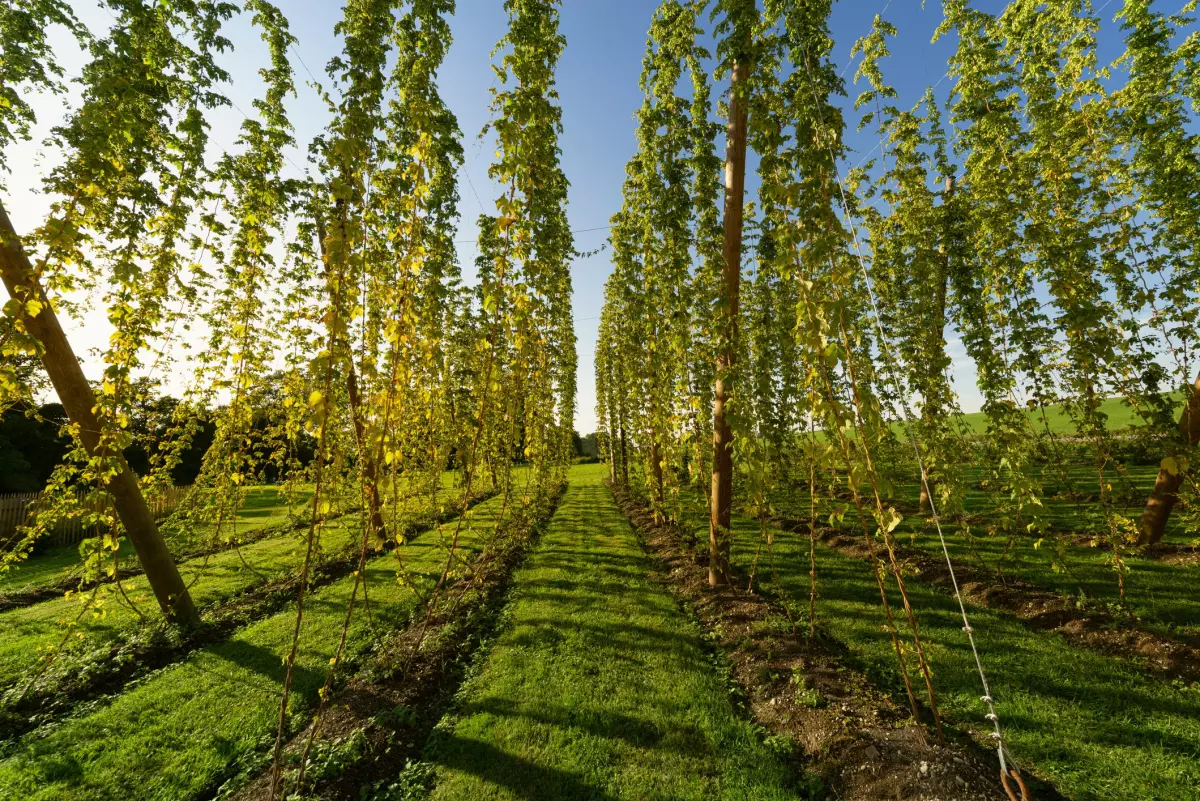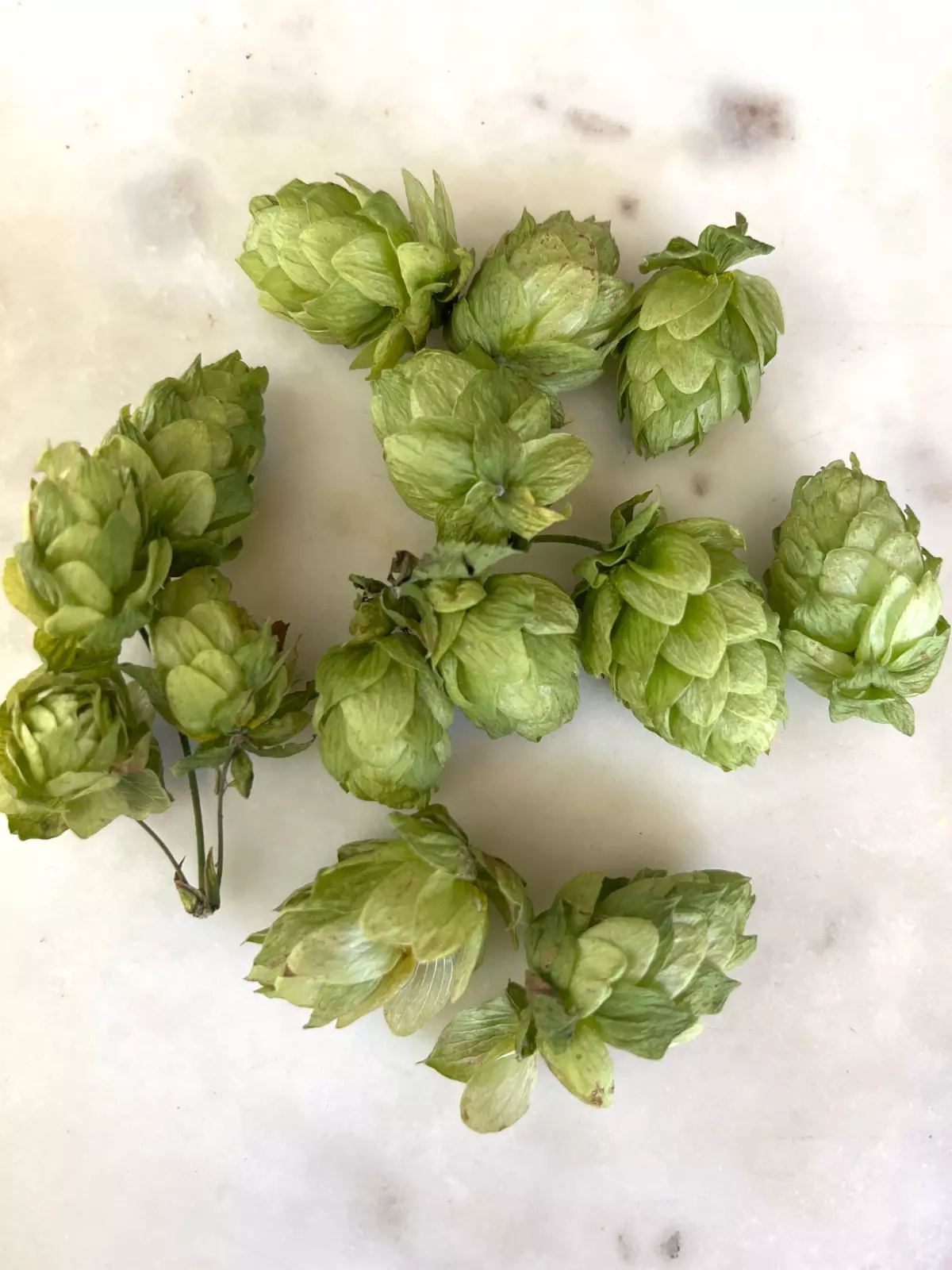Hops’ tiny green cone blossoms into beer

You can try to grow hops in San Diego County for personal consumption; however, it will take time, patience and the appropriate growing conditions. (Getty Images)
With sufficient sunlight, space, careful watering and persistence, San Diego gardeners can grow key ingredient for their home brew
(This article originally appeared in the February 10, 2024 edition of the San Diego Union-Tribune)
Hop plants love a well-drained, deep, sandy loam soil with a pH of 6 to 7.0. Plant nutrition consists of fertilizers applied in spring as well as manure or compost.
Downy mildew, wilt and viral diseases plague hops; spider mites and hop aphids are less aggressive pests. Unfortunately, the plants do not tolerate herbicides or pesticides. Commercial growers have been successful in managing these diseases.
Brewing beer with hops was halted in the U.S. during the Prohibition era, which began in 1920 and lasted until 1933. As the federal tax on homemade beer was lifted in the 1970s, there was a resurgence of home brewing throughout the country.
Globally, the U.S. leads the trend in the creation of new hops varieties. We tend to produce and enjoy the citrus, fruity and flowery aromas of beer.

Close-up of mature hops. (Barb Sands)
Interestingly, there are many hop varieties and yet these nine from the U.S. are the most popular: Chinook, Amarillo, Centennial, Cascade, Mosaic, Citra, Magnum, Simcoe and Columbus. Cascade imparts a grapefruitlike flavor and aroma, whereas Centennial is a bit more bitter, less floral and adds a citrus aroma to a beer. Columbus is used for its bittering notes, frequently used later in the beer-making process to provide a citrusy and even woodsy flavor. Each hop variety imparts varying percentages of alpha acids, which creates unique tastes.
The Europeans also craft new varieties, and currently the most popular among beer drinkers are Mandarina Bavaria (citrus note), Hallertau Blanc (like a fine white wine) and Polaris (think glacier candy!).
So, back to our initial question: How do you make beer? It’s quite simple. Four ingredients are key: malted barley, hops, water and yeast. Malted barley (Hordeum vulgare) is the grain needed for the yeast to ferment and bring beer to life. Hop flowers provide the flavor, bitterness and aroma to a beer and are generally added at three distinct stages: bittering, aroma and flavoring. And it’s no surprise that the mineral content in water from all over the globe gives beers their distinctive flavor.
You can try to grow hops in San Diego County for personal consumption; however, it will take time, patience and the appropriate growing conditions. It’s even possible to grow hops in a container if there is ample room for the roots to spread. This is the biggest issue a homebrewer/grower will face, as the roots can grow to a depth of 15 feet or more.
You will need a very tall trellis — up to 16 feet — and coir twine (coconut fiber) to provide strong vertical support to the hop plants. The plants will also require very large quantities of water (think drip irrigation) and the soil will need fertilizers such as nitrogen (large amounts), potassium and phosphates. A mixture of sandy clay loam, sandy loam, silt and loamy sand is preferred. Commercial fertilizers and manure are available to home growers.
Varieties known for their high yield and versatility — such as Cascade, Columbus, Chinook and Crystal — are good selections for San Diego County. Hops will begin to ripen around August. The first year of growth is dedicated to establishing root growth. The second year, you can expect to see a normal crop based on your climate conditions.
Those interested in brewing beer may want to contact the USA Hop Growers of America, San Diego Hop Growers Association, and the Brewers Association. In addition, check out the UC Cooperative Extension page at ccsmallfarms.ucanr.edu or visit several of the 150 local breweries throughout San Diego County. The next USA Hops Convention for growers and grower support will be held in Coronado from Jan. 21 through 25, 2025.
Cheers!
Sands has been a UCCE Master Gardener since 2014. You can follow her walking through hops farms in Germany, talking with enthusiastic beer growers here in San Diego or sampling new beer varieties west of the Rockies.

